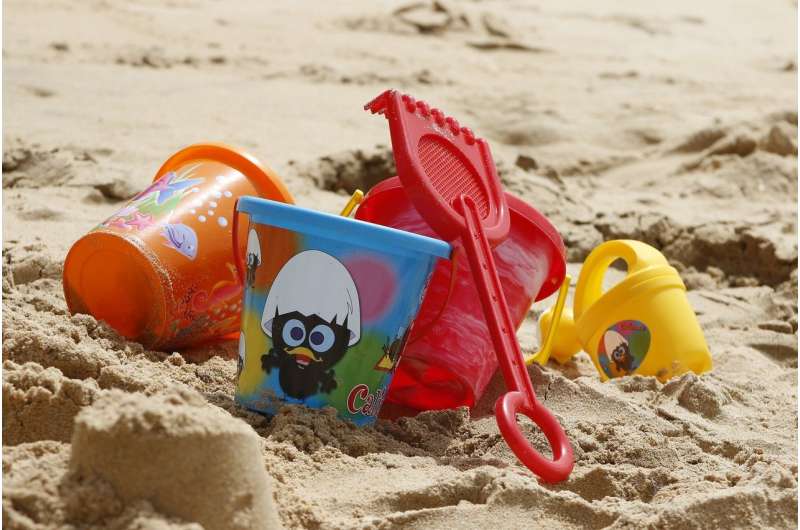High levels of carcinogenic chemical found in everyday consumer products

High levels of the carcinogenic chemical cadmium can still be found in everyday household products like second-hand plastic toys, drinking glasses, alcoholic beverage bottles, ceramics and artists' paints, according to new research by the University of Plymouth.
Cadmium was commonly used to give products a bright red, orange or yellow pigment, but over time the decoration on glass can start to flake and the glaze on ceramics fail.
Writing in Science of the Total Environment, scientists also suggest it is unintentionally finding its way into glass and other items through the recycling process.
The cumulative effects of cadmium ingestion potentially poses a risk to human health and the environment. However, international regulations and guidelines are often complex, contradictory or outdated, with legal or advisory limits ranging from 50 to 800 parts per million (ppm) of cadmium.
However, a study by Dr. Andrew Turner shows that the surfaces of common items covered by those laws may have many times more than the legal or recommended levels.
The highest readings of up to 70,000 ppm were recorded on the enamels of old and new drinking glasses and bottles, with cadmium detected in about 70 per cent of the 197 logos, patterns, text, pictures and cartoons tested on 72 products.
Cadmium was also found in new ceramic items such as mugs, plates and bowls, with the highest recorded level of 40,000 ppm, and in old plastic products including toys, with a maximum 35,000 ppm in a decorative brooch.
Cadmium was also found at lower levels in a range of other consumer products, with the recycling process being the most likely source.
Dr. Turner has previously conducted research which showed that cadmium and a host of other harmful elements are present in second hand plastic toys and drinking glasses, and he says these still undoubtedly pose the greatest threat of harm.
The current study is based on the results of tests on thousands of new and second hand items conducted using portable X-ray fluorescence (XRF) spectrometry.
Dr. Turner, Associate Professor (Reader) in Environmental Science, said:
"If you asked most people about cadmium they'd probably know very little about it. But it is listed among the World Health Organisation's ten chemicals of major public health concern, alongside substances such as lead and asbestos. As such, it is concerning to see it in such high quantities in so many household products. The health risk depends on how easily the cadmium can flake off or leach out and additional tests performed indicate that this is greatest for enamelled glassware.
"The product labels on some items do contain warnings about the presence of cancer-causing chemicals. But the heat-resistant nature of cadmium means it is not destroyed by the recycling process and so could be unintentionally finding its way into newly recycled articles. Given that there are non-toxic alternatives available, and knowing the effects that cadmium can have, you have to question why it is still being used at all."
More information: Andrew Turner. Cadmium pigments in consumer products and their health risks, Science of The Total Environment (2018). DOI: 10.1016/j.scitotenv.2018.12.096
Journal information: Science of the Total Environment
Provided by University of Plymouth



















